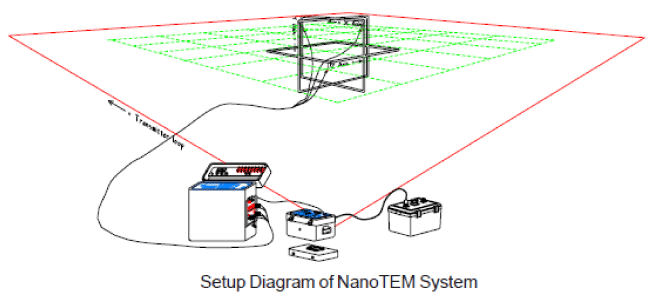One traditional limitation of transient electromagnetic sounding methods is the long turn-off times of the transmitted signals. For shallow soundings, and highly resistive areas, this has prevented effective use of the method. In order to obtain very shallow information, the transmitted signal must go to zero very rapidly, without “ringing” or oscillations of either the electronics or the wire loops themselves. Depending on loop characteristics, the NT-20 transmitter turns off in approximately 1.5 microseconds. This rapid turn-off, and the high speed analog-to-digital conversion in the GDP32 receiver, allows data collection at depths less than 2 meters and in areas with electrical resistivities in excess of 20,000 ohm-meters. The receiver records the decay curve as 31 windows (or gates) from approximately 1.5 microseconds after transmitter turn-off to about 3 milliseconds after turn-off.
Because of the flexibility of changing transmitter and receiver loop sizes, NanoTEM can be used for a variety of different targets. Surveys have been performed using forty meter (40 m by 40 m) transmitter loops with five meter (5 m by 5 m) receiver loops to collect resistivity sounding in highly resistive ground. The same system has also been used with a ten meter (10 m by 10 m) transmitter loop with one meter (1 m by 1 m) receiver loops to locate small metallic objects.



